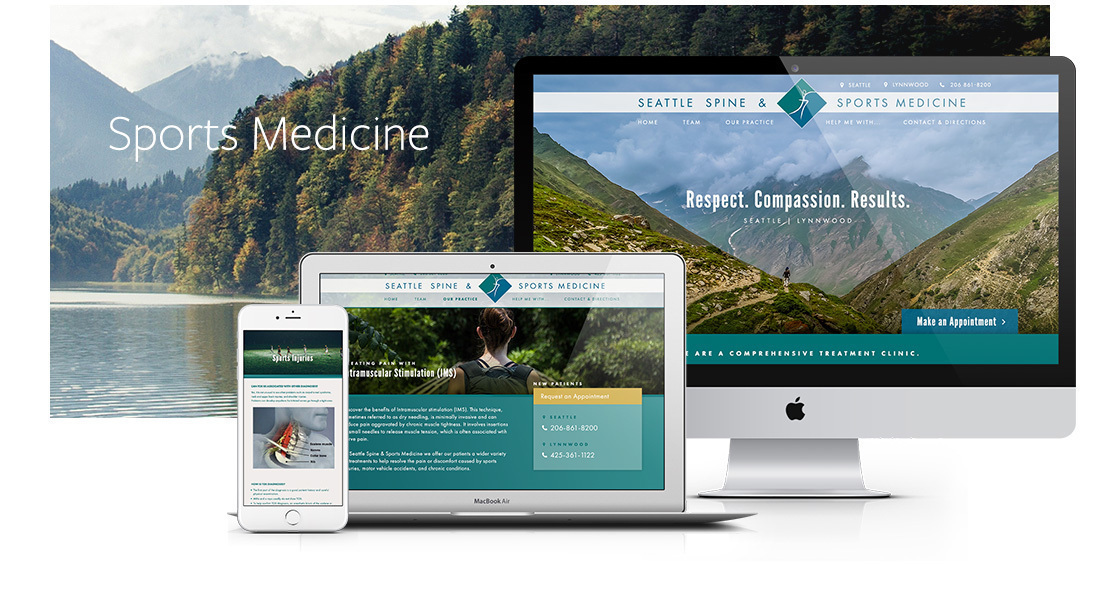Medical marketing is highly competitive, as almost every single medical practice in your city has both a website and a social media account. They’re all competing for the same limited number of keywords that drive organic traffic and new patients through their front doors.
When it comes to marketing your medical practice, you have to know what you’re doing, otherwise people will perceive it as just another doctor’s office in a sea of local practitioners.
Why should the prospective patient choose your office over the one down the street?
Fortunately, there are many things that a medical practice can do to help increase traffic to their websites and drive new patient signups. We’re going to list our five favorite medical marketing tips that can help optimize your site and increase foot traffic through your front door.
Website Design
Your medical website is where it all starts. It has to instantly instill trust in the prospective patient and give them a reason to pick up the phone and make an appointment. This is where many medical practices fail as they tend to focus more on getting the patient in the office than reassuring them that they’re making the right choice.
So, what makes a website trustworthy?
There are several elements that successful medical websites have in common such as a clean design, easy to find information, and a responsive design that will work well on all devices.
A trustworthy site should also tell a story. That allows prospective patients to instantly get to know the doctor before they set a single foot into the office. If your website design and content can make that personal connection online, it will instill trust in the minds of those who read it.
Untrustworthy websites have many things in common as well, such as:
• They don’t work well on a small smartphone screen.
• Outdated or ugly design.
• Incoherent or inconsistent messaging.
• The pictures are low-quality.
• The website is very slow to load.
Content
A successful medical website is one that offers much more than a clean, modern design. It helps answer important questions and provides reassurance to the patient that they’re making the right decision by coming here.
For example, one of the biggest concerns that prospective patients have is insurance. An informative medical website should have at least have one entire page devoted to such insurance questions as:
- What kinds of insurance do you accept?
- Do you accept Medicaid?
- Are there financing options available?
There should also be a page that lists the services that you provide. For example, if you offer eye surgery, the patient will want to know beforehand what it entails, how the procedure works, is there any downtime, and other essential questions. This can also help save you and your receptionists precious time by answering these questions on your website instead of over the phone.
Content Marketing
Google loves websites that post content to their blog regularly. This is where content marketing can help out. Not only can your blog posts help showcase thought leadership and instill trust in the eyes of your website visitors, but they stand a chance at ranking well in the Google organic search results. This can help increase the amount of traffic coming to your site.
A good content marketing game plan starts with a content calendar. This will allow you to plan your blog posts out several months in advance and help keep you on track. If you or your office staff are pressed for time, you can always hire a Seattle content marketing agency that has experience in the medical niches. They can write persuasive content that will help drive new visitors and traffic to your site.
Search Engine Optimization (SEO)
In some geographical markets, you might have 25 or more doctor’s offices competing for the same lucrative keywords in Google. This is where SEO can help your site rise above the rest of the pack and drive more organic traffic.
There are two types of SEO, on-site and off-site. On-site SEO looks at such things as website speed, architecture, and quality of your content. Off-site SEO deals with getting other high-powered and relevant websites to link back to yours. Google views these incoming backlinks as a vote of confidence and can rank your website higher and drive more traffic as you obtain more inbound backlinks.
By performing SEO for medical websites, you’re not only optimizing your site for Google to rank higher in the organic search results, but you’re also creating a much better user experience for the human beings who visit your site as well. This translates directly into higher conversions and more patients.
Branding
What does your doctor logo and brand say about your practice?
Medical branding is the public perception of your practice. It’s how people view your business and the services you offer. Many doctors use their name as their brand—which is fine, but if there’s nothing to back that up, then they’re most likely perceived by people as just another doctor in a sea of many.
Branding can include such visuals as your logo, tagline, marketing materials, website, and even video. It all needs to tie together coherently for a seamless experience across all marketing channels. A well-branded medical practice is one that is perceived with high esteem, trust, and regard by the general public.
Medical Marketing in Seattle
At Bizango, we have helped many local and national medical practices solve their website and marketing challenges. Give us a call today at (206) 462-4020 or contact us to learn more about how we can help take the complicated marketing off your plate and grow your practice.

